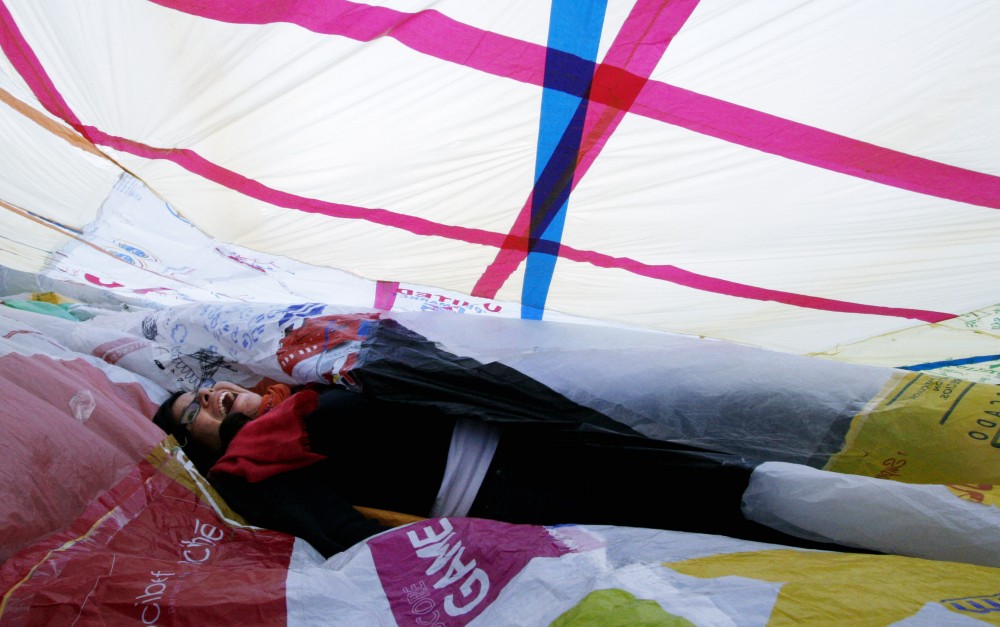âÄúWe are preparing our minds to leave the planet, and at the same time take more care of the planet,âÄù artist Tomas Saraceno said as he discussed the Museo aero solar, a giant solar balloon constructed using donated plastic bags. On Tuesday, the public is invited to the Nomad World Pub where Saraceno and collaborator Alberto Pesavento will discuss the Museo, as well as historical flying machines, ways people have continued to fly and their experience working with the UniversityâÄôs aerospace department. The discussion is part of Café Scientifique , an outreach program sponsored by the Bell Museum of Natural History that sets up informal discussions between scientists and community members. The Museo aero solar has been expanding âÄî literally âÄî for about a year and a half as it has visited world cities. âÄúItâÄôs never the same thing,âÄù Pesavento said. âÄúItâÄôs about the people we can find.âÄù In Minneapolis, the eighth city the Museo has visited, they found James Flaten , a University aerospace engineering professor who does helium ballooning. When he told them about the technology he uses on his balloons, like cameras and tracking devices, âÄúthey were quite intrigued,âÄù Flaten said. Although the Museo stayed grounded on Saturday morning, it is possible for solar balloons to fly. âÄúThe balloon, if you put it outside, essentially will serve almost like a greenhouse,âÄù Flaten said. The air inside will get hotter than the outside, and it will lift itself off the ground. In other cities, the Museo has successfully levitated, but has remained tethered to the ground. Here, the artists were interested in allowing the balloon to fly freely, which requires Federal Aviation Administration permission. Flaten said they were denied permission to fly the large Museo, but they quickly built a smaller one that did receive permission to fly. He helped them outfit it with a deflation mechanism, a giant zipper held in place with a string that can be severed remotely. He also provided cameras and a tracking device that charts the balloonâÄôs location. The artists hope to fly the smaller balloon before they leave Minneapolis, pending good weather conditions. âÄúI think more so than most art projects, this one depends on science and engineering to work,âÄù Flaten said. However, itâÄôs an art project first, he said, and scientists would likely go about it differently. For example, theyâÄôd limit the type of material used. âÄúWhat these guys do, which is great outreach, is they use any materials that show up and incorporate it into the balloons,âÄù Flaten said. Though the artists arenâÄôt doing cutting-edge scientific research, Shanai Matteson , science and culture program coordinator at the Bell Museum, said they âÄúcapture the imagination of science, embody that spirit that they share with a lot of aerospace engineers.âÄù SaracenoâÄôs vision shows no shortage of imagination. He said heâÄôd like to see people living in the air, and talked about a solar balloon that would stay afloat even at night, in the absence of solar energy, using the warmth of its occupantsâÄô breath. âÄúWeâÄôre proposing a different way of traveling,âÄù he said, imagining a solar balloon that would carry groups of people moving with the currents of wind. Saraceno said the project also adds value to the plastic material it uses, which would otherwise sit in a landfill.

Image by Jennifer Whalen
fe1009
Artists to discuss solar balloon at forum
Published October 13, 2008
0
More to Discover







